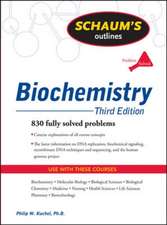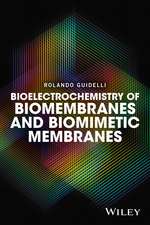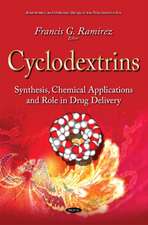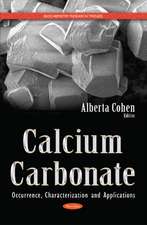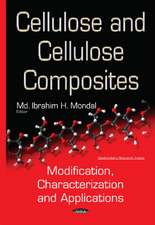Biological Reactive Intermediates: Formation, Toxicity, and Inactivation
Editat de David Jollowen Limba Engleză Paperback – 14 mai 2013
Preț: 651.84 lei
Preț vechi: 766.87 lei
-15% Nou
Puncte Express: 978
Preț estimativ în valută:
124.75€ • 129.76$ • 102.98£
124.75€ • 129.76$ • 102.98£
Carte tipărită la comandă
Livrare economică 15-29 aprilie
Preluare comenzi: 021 569.72.76
Specificații
ISBN-13: 9781461341260
ISBN-10: 1461341264
Pagini: 532
Ilustrații: XI, 514 p. 10 illus.
Dimensiuni: 155 x 235 x 28 mm
Greutate: 0.74 kg
Ediția:Softcover reprint of the original 1st ed. 1977
Editura: Springer Us
Colecția Springer
Locul publicării:New York, NY, United States
ISBN-10: 1461341264
Pagini: 532
Ilustrații: XI, 514 p. 10 illus.
Dimensiuni: 155 x 235 x 28 mm
Greutate: 0.74 kg
Ediția:Softcover reprint of the original 1st ed. 1977
Editura: Springer Us
Colecția Springer
Locul publicării:New York, NY, United States
Public țintă
ResearchCuprins
I. Reactive Intermediates in Toxicology and Carcinogenesis: Role of Covalent Binding.- 1. Introduction to the Concept of Reactive Intermediates.- 2. The Concept of Reactive Electrophilic Metabolites in Chemical Carcinogenesis: Recent Results with Aromatic Amines, Safrole, and Aflatoxin B1.- 3. Kinetics of Reactive Metabolites and Covalent Binding in Vivo and in Vitro.- 4. Biochemical Aspects of Toxic Metabolites: Formation, Detoxication, and Covalent Binding.- 5. Discussion.- II. Formation of Reactive Intermediates.- 6. Mechanism of Microsomal Monooxygenases and Drug Toxicity.- 7. Discussion.- 8. Aryl Hydrocarbon Hydroxylase: Induction.- 9. Discussion.- 10. Benzo [a] pyrene Metabolism: Enzymatic and Liquid Chromatographic Analysis and Application to Human Liver, Lymphocytes, and Monocytes.- 11. Discussion.- 12. Genetic Differences in Benzo [a] pyrene Carcinogenic Index in Vivo and in Mouse Cytochrome P1 450-Mediated Benzo [a] pyrene Metabolite Binding to DNA in Vitro.- 13. Discussion.- 14. Formation of Toxic Intermediates in Fetal Tissues.- 15. Discussion.- 16. The Possible Role of Trout Liver Aryl Hydrocarbon Hydroxylase in Activating Aromatic Polycyclic Carcinogens.- 17. Metabolic Activation of Methyldopa by Cytochrome P450-Generated Superoxide Anion.- 18. Formation of Tertiary Amine N-Oxide and Its Reduction by Rat Liver Microsomes.- III. Inactivation of Reactive Intermediates.- 19. Epoxide Hydratase: Purification to Apparent Homogeneity as a Specific Probe for the Relative Importance of Epoxides among Other Reactive Metabolites.- 20. Glutathione S-Transferases.- 21. Discussion.- 22. UDPGlucuronosyltransferase: Substrate Specificity and Reactivation after Partial Separation from Other Membrane Components.- 23. Discussion.- 24. Inactivation of Reactive Intermediates in Human Liver.- 25. Discussion.- 26. Nucleotide Pyrophosphatase as a Competitor of Drug Hydroxylation and Conjugation in Rat Liver Microsomes.- IV. Specific Reactive Intermediates.- 27. Metabolic Activation of Hydrazines to Highly Reactive Hepatotoxic Intermediates.- 28. Discussion.- 29. Activation of Nitrite.- 30. Discussion.- 31. Benzene Metabolism and Toxicity.- 32. Benzene and p-Xylene: A Comparison of Inhalation Toxicities and in Vitro Hydroxylations.- 33. Discussion.- 34. Hepatotoxicity of Carbon Disulfide and of Other Sulfur-Containing Chemicals: Possible Significance of Their Metabolism by Oxidative Desulfuration.- 35. Studies of the Formation of Reactive Intermediates of Parathion.- 36. Discussion.- 37. Metabolism and Biological Activity of Benzo [a] pyrene and Its Metabolic Products.- 38. Discussion.- 39. Polycyclic Hydrocarbon Epoxides as Active Metabolic Intermediates.- 40. Stereoselective Synthesis and Reactions of a Diol-Epoxide Derived from Benzo [a] pyrene.- 41. Discussion.- 42. Additional Routes in the Metabolism of Phenacetin.- 43. Biliary Metabolites of Paracetamol in Relation to Dose Level and Various Pretreatments.- 44. Studies on Pharmacokinetics of N-Demethyldiazepam, the Active Main Metabolite of Diazepam.- V. Reactive Intermediates in Lipid Peroxidation.- 45. Regulation and Effects of Lipid Peroxidation in Isolated Hepatocytes.- 46. Discussion.- 47. New Data Supporting an Obligatory Role for Lipid Peroxidation in Carbon Tetrachloride-Induced Loss of Aminopyrine Demethylase, Cytochrome P450, and Glucose-6-phosphatase.- 48. Discussion.- 49. Binding of Haloalkanes to Liver Microsomes.- 50. Discussion.- 51. Degradation of Cytochrome P450 Heme and Lipid Peroxidation in Lead-Poisoned Rats.- VI. Reactive Intermediates in Carcinogenesis.- 52. The Effects of Microsomal Enzymes on Chemical Oncogenesis in Culture.- 53. Discussion.- 54. Role of Covalent Binding in Carcinogenicity.- 55. Discussion.- 56. Interactions of Carcinogens with Human Cell DNA: Damage and Repair.- 57. Discussion.- 58. The Origin, Present Status, and Trends of Toxicology: A Review of the Symposium in Turku, 1975.- Participants.

